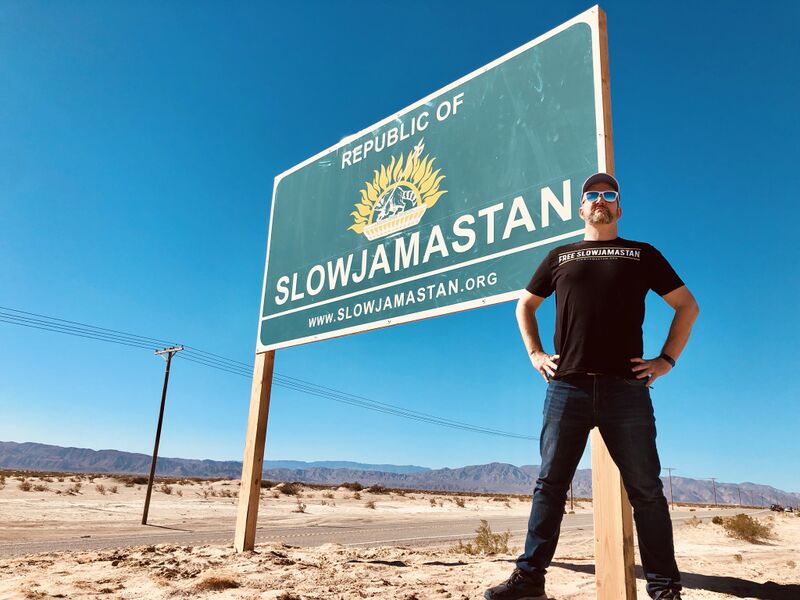Difference between revisions of "Template:POTD protected"
Jump to navigation
Jump to search
Westarctica (talk | contribs) (Created page with "{| role="presentation" style="margin:0 3px 3px; width:100%; text-align:left; background-color:transparent; border-collapse: collapse; " |style="padding:0 0.9em 0 0;" | File:...") |
Westarctica (talk | contribs) |
||
| (214 intermediate revisions by the same user not shown) | |||
| Line 1: | Line 1: | ||
{| role="presentation" style="margin:0 3px 3px; width:100%; text-align:left; background-color:transparent; border-collapse: collapse; " | {| role="presentation" style="margin:0 3px 3px; width:100%; text-align:left; background-color:transparent; border-collapse: collapse; " | ||
|style="padding:0 0.9em 0 0;" | [[File: | |style="padding:0 0.9em 0 0;" | [[File:Slowjamastan-california-free-sign.jpg|300px|thumb]] | ||
|style="padding:0 6px 0 0"| | |style="padding:0 6px 0 0"| | ||
'''[[ | The '''[[Republic of Slowjamastan]]''' is a North American [[micronation]] landlocked within Imperial County, Southern California. It covers 11.07 acres of land, parallel to California State Route 78, between the towns of Ocotillo Wells and Westmorland. Slowjamastan was founded on 18 August 2021 by nationally syndicated radio personality Randy "R Dub!" Williams who would immediately declare himself Sultan of Slowjamastan. While no physical land was in possession when the nation was founded, on 3 September 2021, Williams entered into an agreement to purchase eleven acres of land. On 4 October 2021, Williams completed escrow and closed the deal on his land purchase. | ||
<p><small> | |||
<p><small>Photo credit: Slowjamastan</small></p> | |||
[[:Category:Images|'''(More Images)''']] | |||
<div class="potd-recent" style="text-align:right;"> | <div class="potd-recent" style="text-align:right;"> | ||
Latest revision as of 15:41, 5 August 2025
|
The Republic of Slowjamastan is a North American micronation landlocked within Imperial County, Southern California. It covers 11.07 acres of land, parallel to California State Route 78, between the towns of Ocotillo Wells and Westmorland. Slowjamastan was founded on 18 August 2021 by nationally syndicated radio personality Randy "R Dub!" Williams who would immediately declare himself Sultan of Slowjamastan. While no physical land was in possession when the nation was founded, on 3 September 2021, Williams entered into an agreement to purchase eleven acres of land. On 4 October 2021, Williams completed escrow and closed the deal on his land purchase. Photo credit: Slowjamastan |
